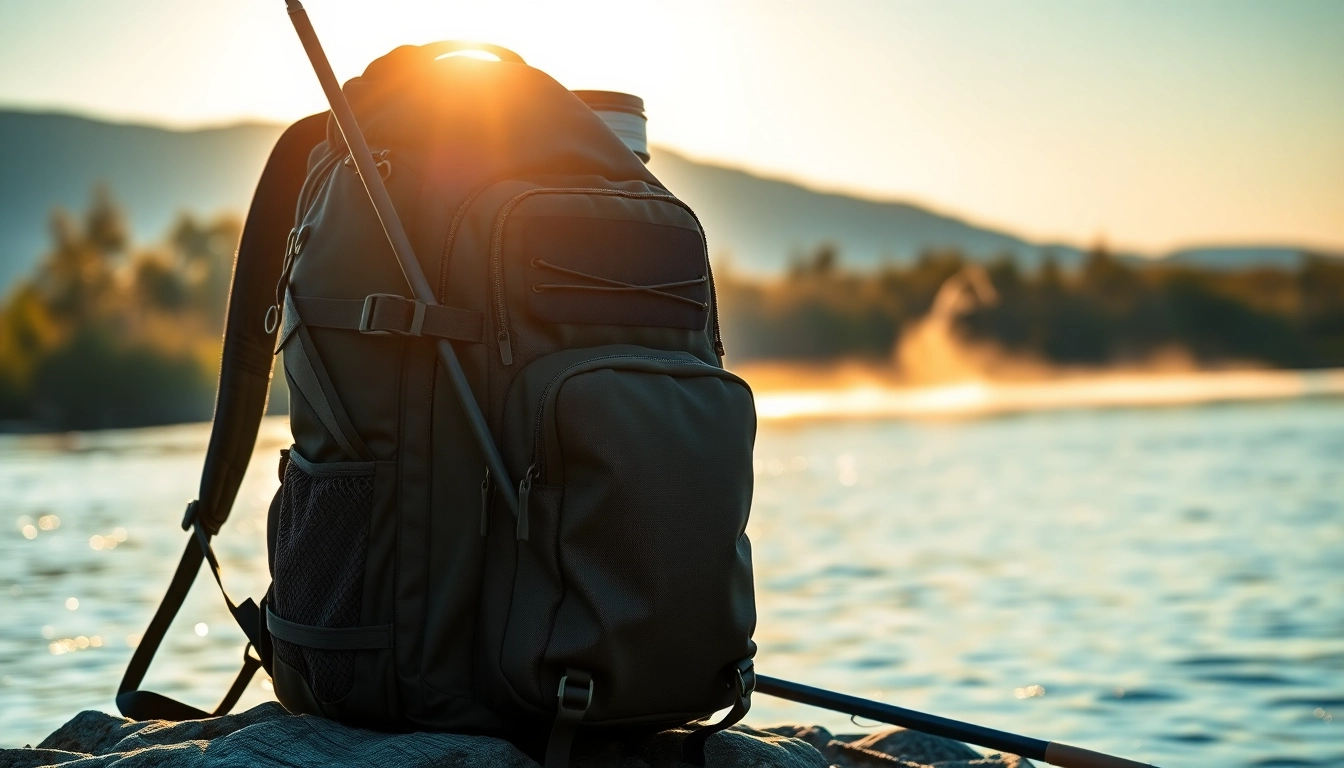Understanding the Need for a Fly Fishing Backpack
Fly fishing is an immersive experience that allows enthusiasts to connect with nature while honing their fishing techniques. Whether you’re casting a line in a serene river or braving the rapids, having the right gear is essential. One of the most crucial accessories is a well-designed fly fishing backpack, which can make a significant difference in your fishing experience. This article delves into the key considerations for selecting the right fly fishing backpack, ensuring you are well-prepared for your adventures.
The Benefits of Dedicated Fishing Gear
A dedicated fly fishing backpack is designed specifically for the needs of anglers, allowing for efficiency and convenience. Unlike conventional backpacks, a fly fishing backpack features compartments and pockets custom-tailored to house fishing gear such as flies, reels, and tools securely. With convenient access to your essential gear, you can spend more time fishing and less time rummaging through a generic backpack.
Choosing the Right Size and Features
When selecting a fly fishing backpack, size matters. Depending on the duration of your fishing trips—whether it’s a quick half-day outing or a full weekend expedition—you will need different capacities. Smaller packs may suffice for short trips, while larger packs can carry more gear, snacks, and hydration systems for extended adventures.
Features such as external attachment points for landing nets and rod holders can provide added functionality. Furthermore, hydration capabilities and built-in waterproofing can elevate your backpack’s versatility.
Common Mistakes to Avoid
New anglers often overlook the importance of comfort and organization when choosing a backpack. A common mistake is selecting a too-small pack that doesn’t accommodate necessary gear, or conversely, an oversized pack that adds unnecessary weight. Be sure to prioritize comfort features, such as adjustable straps and padded back panels, to ensure your fly fishing backpack supports you throughout your day on the water.
Key Features to Look for in a Fly Fishing Backpack
Material Durability and Weather Resistance
The primary materials used in constructing a fly fishing backpack can significantly affect its performance and longevity. Look for high-density nylon or polyester fabrics that offer excellent resistance against abrasions, moisture, and UV rays. Weather-resistant or waterproof treatments enhance your pack’s ability to keep your gear dry—even in unexpected weather conditions.
Pockets and Compartments for Organization
A fly fishing backpack should have multiple compartments designed to accommodate various pieces of gear. Look for specialized pockets for fly boxes, tippet spools, and tools like nippers or forceps, which allow for quick access and organized storage. Interior mesh pockets can help you see your gear while keeping it protected, further enhancing your efficiency by making essential items readily accessible.
Comfort and Ergonomics for Long Days
Comfort is paramount when spending long hours on the water, and a well-designed fly fishing backpack should feature ergonomic designs that distribute weight evenly. Padded shoulder straps, adjustable chest and waist belts, and ventilated back panels can mitigate fatigue and discomfort. It’s essential to try on the backpack with added weight to ensure that it suits your body type and fishing style.
Top Brands and Models of Fly Fishing Backpack
Reviewing Popular Options on the Market
While different brands may dominate the market, the right choice ultimately depends on individual preferences. Popular models often feature unique configurations, providing various options to cater to specific fishing styles. Consider opting for reputable brands known for their dedication to quality and customer satisfaction, focusing on user feedback to gauge performance.
Comparative Analysis of Features
When evaluating different fly fishing backpacks, it’s essential to compare features methodically. Look into aspects like weight, volume, organizational capabilities, ease of use, and materials used. Each feature impacts usability and efficiency when you’re on the water, so knowing how various designs meet your specific needs can significantly influence your selection process.
User Reviews and Insights
User reviews can provide invaluable insight into the real-world usability of fly fishing backpacks. Pay attention to comments regarding comfort during long days, the effectiveness of organizational features, and the pack’s overall durability during different fishing conditions. Such insights can clarify which models are worth considering and which may fall short.
Caring for Your Fly Fishing Backpack
Proper Cleaning Techniques
To extend the life of your fly fishing backpack, proper cleaning is essential. Start by emptying the bag and shaking out any debris. Most backpacks can be cleaned using mild soap and water; avoid harsh detergents that can degrade the material. Air drying your pack is the best approach to prevent damage from excessive heat.
Storage Tips to Extend Life
When not in use, store your fly fishing backpack in a dry and cool space away from direct sunlight to prevent fading and material degradation. Avoid folding or cramming it into tight spaces, as this can cause creasing and structural damage over time. Instead, hang it up or store it upright to maintain its shape.
Common Repairs and Maintenance
Over time, wear and tear may occur, especially in high-use areas such as zippers and seams. Familiarizing yourself with simple repairs—like replacing a broken zipper or sewing a seam—can prolong the life of your backpack significantly. Keeping a small repair kit with fabric patches, thread, and needles in your gear can assist in managing minor issues while on your fishing trips.
Ready for the Water: Packing Your Fly Fishing Backpack
Essential Gear to Include
To maximize your time on the water, ensure your fly fishing backpack is packed with essential gear. Key inclusions are your fly selections, tippet spools, casting tools, and any special equipment for your preferred fishing style. A comprehensive checklist tailored to your specific fishing location and conditions can ensure you don’t forget critical items.
Strategic Packing Tips for Efficiency
Strategically packing your fly fishing backpack not only enhances your ease of access but also improves organization. Place frequently used items—like fly boxes and tippets—in accessible pockets. Heavier items should be nestled closest to your back to maintain balance, while lighter items can be placed farther out. Layer items efficiently to avoid digging for essential gear deeply buried in your pack.
Safety Considerations
Safety should never be overlooked while you’re preparing for a fishing trip. Include first-aid supplies, a reliable whistle, and any necessary safety gear like PFDs (personal flotation devices) depending on the water conditions you’ll be facing. Being prepared for emergencies can ensure you enjoy your trip safely and responsibly.



